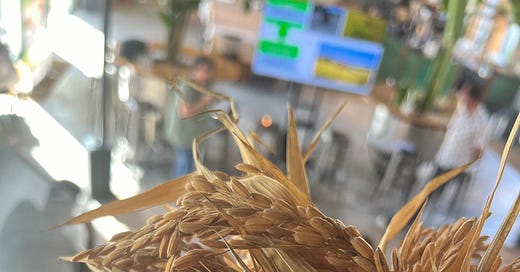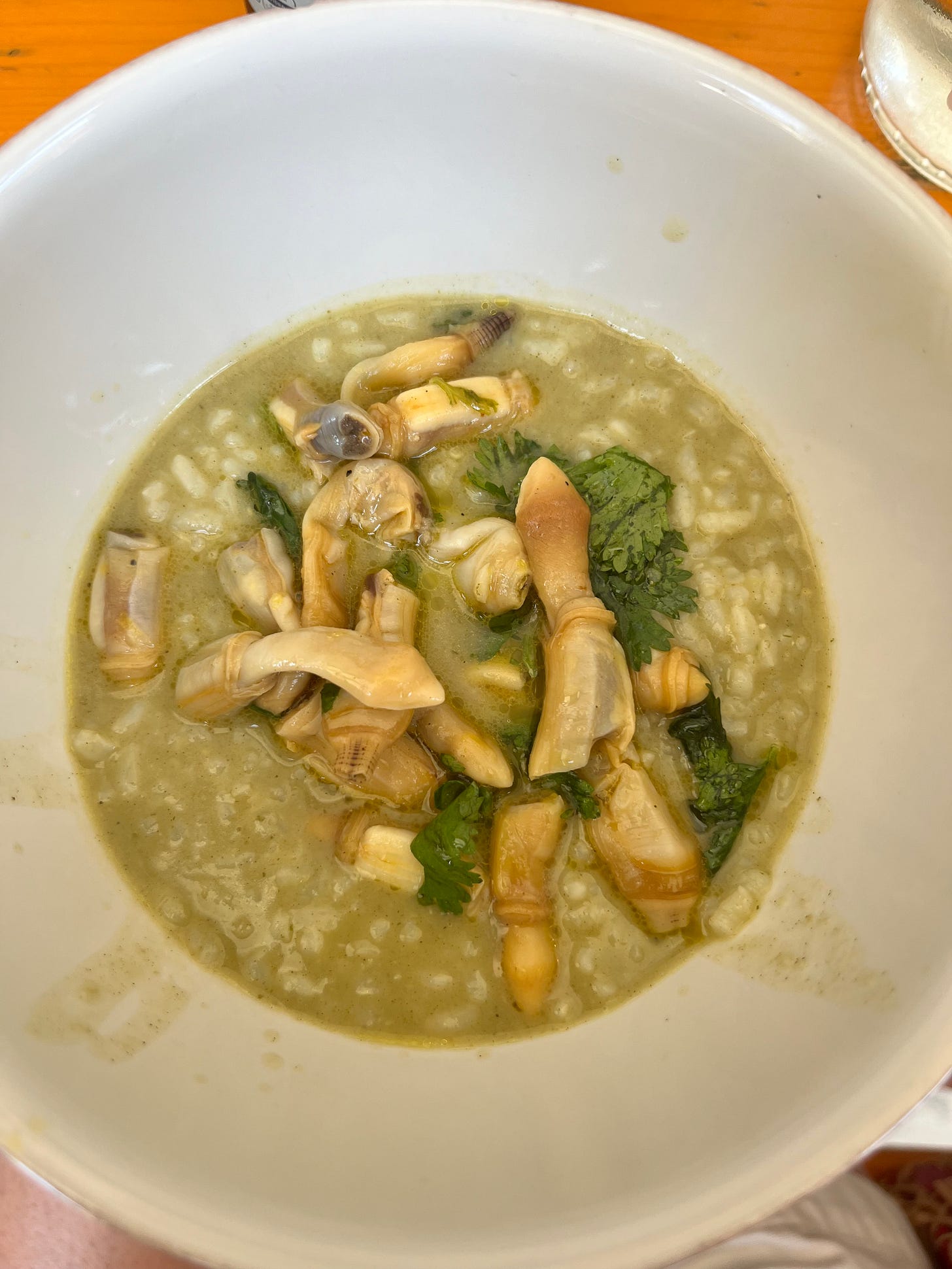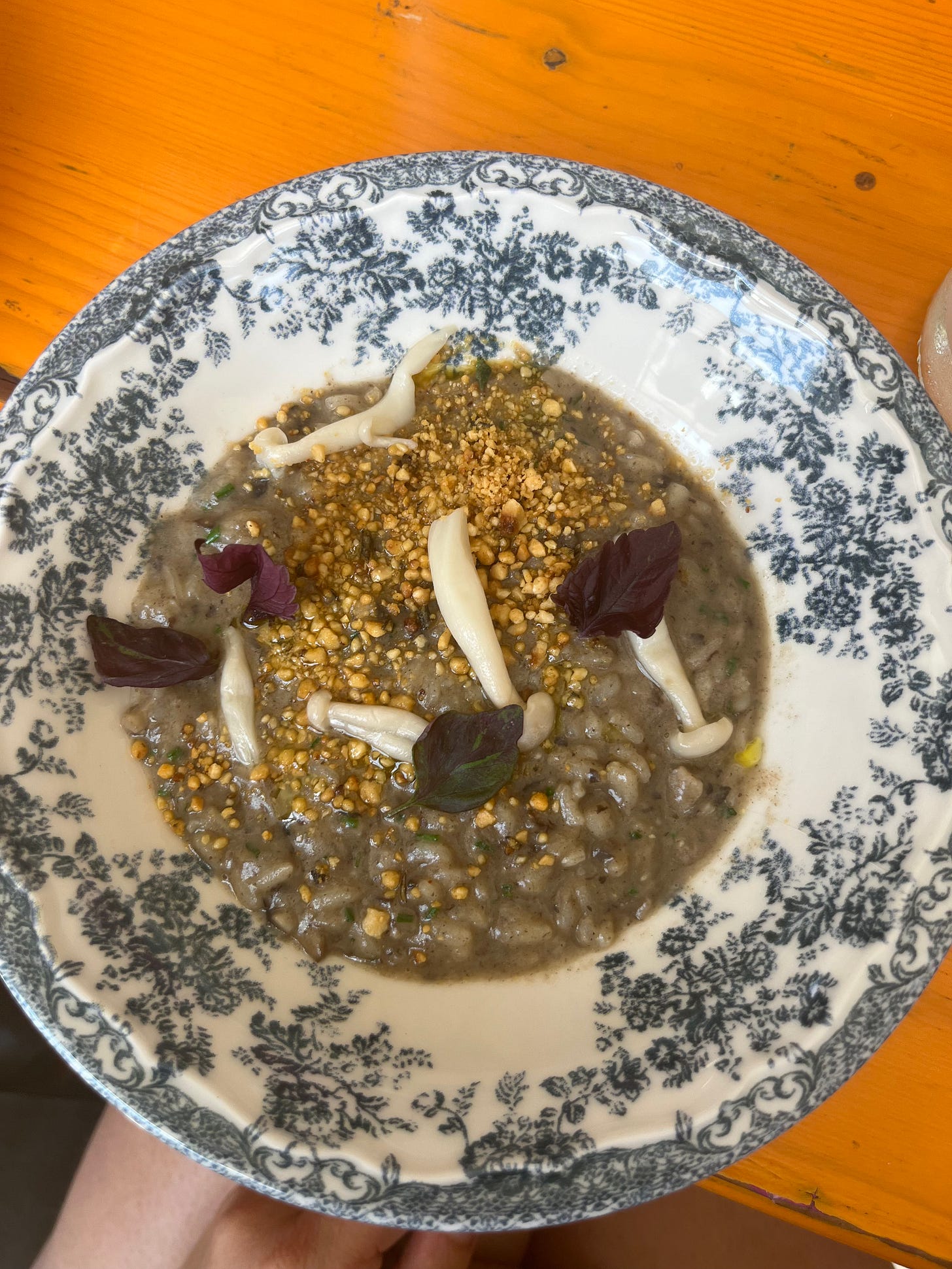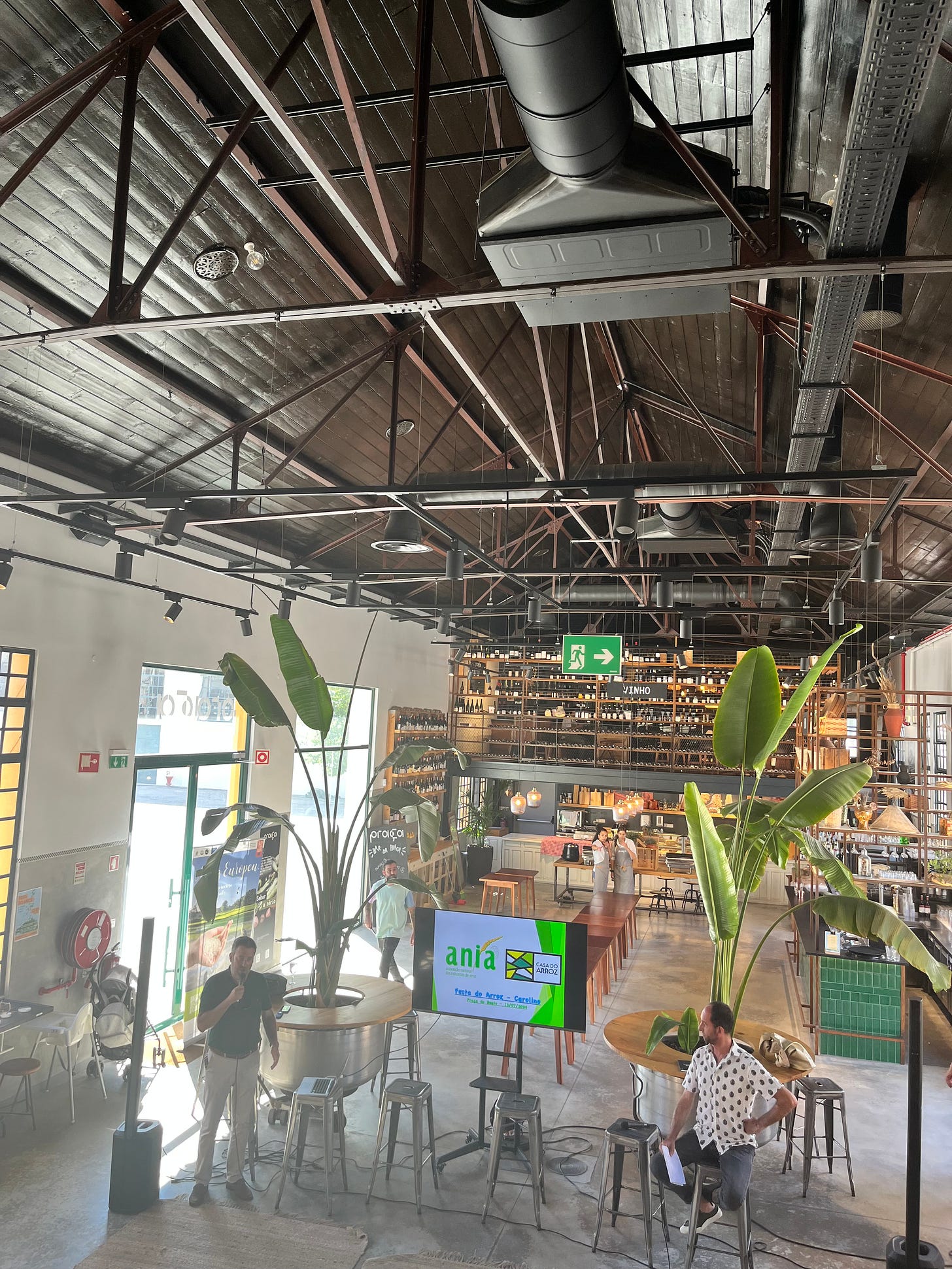An Autochtonous Rice for Portugal: Between Gastronationalism and Slow Food
Portugal is the European country that consumes most rice per capita. And till today, they had to pay royalties outside for their seeds.
This is a very long article. If you prefer a visual cue, I have made a presentation for you—it's also at the bottom of this article! Let me know if you like it, I am playing around with new tools to transform text to visuals.
Rice in Portugal
With 16 kilos per capita, the Portuguese are the largest rice consumers in Europe, beating the Italians with risotto or the Spanish with paellas.
Portuguese are the Asians of Europe. Rice is the main ingredient in starters, sausages, main dishes, soups, and desserts.
Beat that!
Portugal is also the fourth largest rice producer in the EU after Italy, Spain, and Greece. This sector has around 2,000 farmers involved in cultivation and 500 workers in the country's ten rice fields. In total, around 10,000 people are directly involved in rice production, in addition to 5,000 who are indirectly involved in processing, distribution, and marketing.
Portugal's agricultural area dedicated to rice cultivation is a vast 28,000 hectares, a testament to its commitment to this crop. This area is highly productive, yielding an impressive 5.6 tons per hectare, demonstrating this sector's potential for growth and development.
Portuguese rice production is historically rooted in Italian and Spanish varieties like Ariete, Guadiagran, Teti, Opale, Lusitano, Presto and Ronaldo but is now witnessing the emergence of unique local varieties.
Japonica Ceres, Diana, Caravela, and Indica Maçarico are all varieties born in Portugal, and it is not that they are just the new kids on the block. They also bring unique qualities and potential that not only pique the interest of researchers, farmers, and policymakers but can inspire hope for the future of rice production.
Caravela Rice
Caravela is the latest addition to the Portuguese rice varieties.
It is a long, crystalline grain. More importantly, it promises an exciting gastronomic experience, ensuring good quality that can surely excite and inspire culinary exploration.
Its story is quite interesting.
It starts with the Rice Research and Innovation Agenda, led by the Rice Competence Center—COTARROZ—and involves input from economic stakeholders in the national rice farming sector.
An assessment identified the industry's critical needs that could be addressed through R&I. One significant need was the market's lack of competitive Portuguese rice varieties. This problem had been dragging on for many years. Still, it was only recently tackled with the registration of four Portuguese varieties developed by the National Rice Genetic Improvement Program from INIAV/COTARROZ.
In 2021, the company LUSOSEM acquired the rights to produce, sell, and multiply the most recent Portuguese variety, CARAVELA.
LUSOSEM worked hard to multiply the seeds. Sonae, the owner of supermarket chain Continente, worked together with a network of producers and is ready now to distribute the rice—a competitive deal that guaranteed them two years of monopoly before the patent was released.
Caravela will hopefully be the choice of most Portuguese households.
The Chefs
Relentless organizer, thinker and journalist Edgardo Pacheco invited the whole industry and the public to A Praça some months ago for a real Rice Festival.
Four chefs were invited to the presentation party for this new Caravela rice.
Kiko Martins, the chef behind A Chevicheria, O Talho and the new Le Bleu, presented a delicious mushroom risotto. Elegant, with a subtle tanginess and an acidic kick, was my evening favourite.
Bertílio Gomes, who is the most famous Algarvian chef and the powerhouse behind Taberna Albricoque, a delicious ice cream production that features a carob ice cream, this time presented a malandrinho rice with razor clams. It was tasty, and I am not the biggest lover of this rice style, but it was so good that we ended up dining at Albricoque in the evening, so enticed by his cuisine.
Lucas Azevedo, the most famous Japanese chef in Portugal and the man behind the successful Ryoshi restaurant, presented a delicious eel Onigiri with a fresh broth to combine. A staple of his informal restaurant, it is here to serve as a colder intermezzo for a scorching day.
José Maria Lino and Glediston Santos also worked, one with delicious sweet rice and the other with meat-based rice—this one was not my favourite of the evening.
Euro-gastronationalism
Sustainable Rice Europe is a project aimed at disseminating and promoting European Japonica rice and reaching consumers by highlighting the environmental sustainability of the rice farming sector of the four largest rice-consuming countries in the European Union: Italy, Portugal, France and Germany.
This emphasis on sustainability is designed to inspire consumers to make more responsible food choices while showcasing European rice's quality and versatility in the kitchen.
The website presents a series of very appetising recipes, all made with rice, to encourage consumers to choose the more sustainable European rice when they purchase.
Some interesting further readings about rice follow. For instance, check out Gherkins and Tomatoes’ piece on rice in Spain, which opens with this glorious paragraph:
Driving through the parched western reaches of Spain, I understood why months on a leaking ship and eating hardtack appealed more to men like Hernán Cortés and Francisco Pizarro than farming the water-starved ground of their birthplace. Especially with mythical (and eventually real) pots of gold and silver looming tantalisingly at the end of all those torturous voyages across the Atlantic and the many murderous treks over foreboding mountain passes.
Instead, Portuguese Journalist Ricardo Dias Felner’s piece on EGGAS Magazine is all about Carolino Rice; he writes:
The main reason (for customer lack of satisfaction with supermarket rice) is this. When we buy a package of ordinary rice, we eat rice from several rice fields of several varieties, from several regions—possibly from several countries.
Hence, this difficulty is so common among amateur cooks: “Is it already cooked?” Some grains, yes, others no. Common rice grains behave differently in the pan, with different flavours and textures. In other words, ordinary rice does not guarantee uniformity or consistency. Next was the soggy mess that gave the Carolino a lousy reputation.
Next up, I recommend this piece by fellow Substacker India Knight that has a delicious recipe of the BEST possible pairing with plain rice: spinach saag, one of my favourite Indian foods.
Eat with rice or parathas, with plain yogurt and your favourite Indian pickle on the side.
Pilaf rice is another twist on rice that was fashionable when I was a kid and is no longer in style.
Substacker Simon Auscher writes about it beautifully:
Rice pilaf is a bit like white rice, but with a personality. Add zaatar, this mixture of spices from the Levant, and you have a dish that sends you elsewhere. No need for a passport for this trip, just a little butter and a touch of patience.
Rice can also be flour, as the delicious rice flour paratha recipe by Substacker Hetty Lu McKinnon illustrates:
Years ago, I had tried to make bánh xèo – Vietnamese sizzling crepes – but I failed. I like to think the recipe was a dud, but maybe it was me. I wasn’t always as confident or intuitive in the kitchen as I am today. I am a living example of practice makes closer-to-perfect.
In her touching piece “Falling out of love with food. And one rice dish that brought me back home”,
beautifully writes a tomato rice recipe able to reconcile us with our inner self:I can also tell you that when you’re finally ready to lift the lid off your rice pot, the steam will rise dramatically and then disappear just as suddenly, the rice grains at the top will stand to attention, the middle bits will be a mixture of separated grains and rice clumps, the bottom and sides might caramelise or crisp up and the whole thing will be a character of its very own, as unpredictable as the weather in September. And this knowledge of unruly rice, of buttered grains and imperfect meals, for me, sets the whole world right again.
What is your favourite rice dish? Let me know in the comments!














Super interesting piece! I cannot decide a favorite rice dish... Paella or any Spanish-Mediterranean rice dish like arròs caldós are on the top for sure. But a good biryani... 🤤
Kichidi made with brown basmati. Thanks for a super- interesting read.